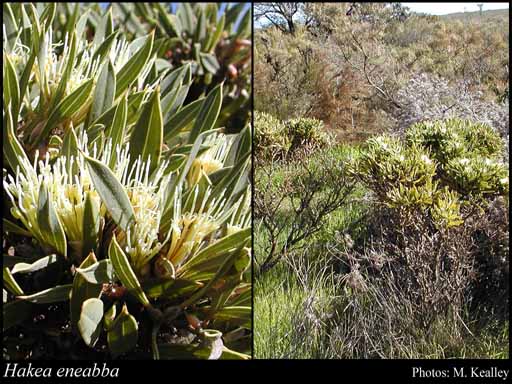- Reference
- Fl.Australia 17B:396 (1999)
- Conservation Code
- Not threatened
- Naturalised Status
- Native to Western Australia
- Name Status
- Current
Erect shrub, 0.4-1.5 m high. Fl. yellow, Jul to Sep. Sand over laterite.

Scientific Description
Shrubs, 0.3-1.3 m high; branchlets glabrous or hairy. Leaves alternate or whorled, 30-120 mm long, 4-14 mm wide, glabrous; lamina flat, widest around the middle or clearly widest above the middle, entire. Inflorescences axillary, yellow; pedicels 2-3 mm long. Perianth 24-27 mm long, glabrous; ovary glabrous; pistil 28-31 mm long, pollen presenter erect, style glabrous. Follicles 22-24 mm long, 11-14 mm wide, corky tetrahedral projections (on external surfaces of fruit) absent; seed 15-17 mm long (including wing), 8-10 mm wide, the wing discontinuous, marginal, extending ± equally down both lateral sides. Flowers in July, August or September. Occurs in the South-west (SW) Botanical Province(s), in the Geraldton Sandplains (GS), Swan Coastal Plain (SWA) or Avon Wheatbelt (AW) IBRA subregion(s).
Distribution
- IBRA Regions
- Avon Wheatbelt, Geraldton Sandplains, Swan Coastal Plain.
- IBRA Subregions
- Dandaragan Plateau, Geraldton Hills, Lesueur Sandplain, Merredin, Perth.
- IMCRA Regions
- Central West Coast.
- Local Government Areas (LGAs)
- Carnamah, Coorow, Dandaragan, Greater Geraldton, Irwin, Moora, Three Springs.